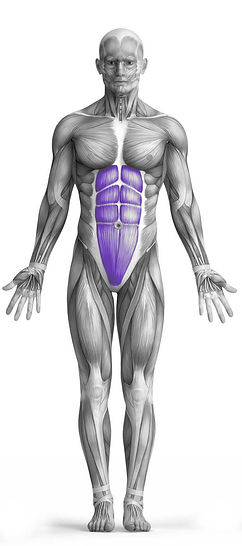Frog Kick 101 Video Tutorial
0

Exercise Synopsis
Target Muscle Group
Abs
Secondary Targets
Execution
Isolation
Force Type
Core
Required Equipment
Bodyweight
Fitness Level
Intermediate
Variations
None
Alternatives
Timer
Hour
Minute
Second
Stopwatch
00:00:00:00
Overview
The Frog Kick is an explosive bodyweight exercise performed from a straight-arm plank position, where the rear legs are hopped up and forward. It primarily targets the abs, with secondary focus on the glutes, and engages the shoulders as well. This high-intensity movement not only strengthens the core but also elevates core body temperature and burns calories effectively. Ideal for athleticism-focused or fat-loss circuits, it can be executed for time or repetitions to boost conditioning and overall fitness.
How to Perform
Start in a Straight-Arm Plank Position: Begin by placing your hands directly under your shoulders and your body in a straight line from head to heels. Your core should be engaged, and your body should be in a plank position with your feet together.
Engage Your Core: Tighten your abdominal muscles and keep your hips level to prevent sagging or piking of the hips during the exercise.
Hike Your Hips Upward: Begin the movement by pushing your hips upward and slightly forward. This action should create a slight arch in your back as you prepare to kick your legs.
Perform the Frog Kick: Bend your knees and bring your legs up towards your chest, keeping your feet together. Once your legs are in this position, extend them outward and slightly forward in a hopping motion.
Contract Your Abs and Glutes: As you kick your legs forward, squeeze your abs and glutes to maintain stability and control the movement. Ensure that your hips remain stable and do not sway side to side.
Return to Start Position: After extending your legs, bring them back to the starting position by bending your knees and moving your feet back towards your chest.
Repeat the Movement: Continue performing the frog kicks for the desired number of repetitions or time, maintaining proper form and controlled movements throughout.
Cool Down: Once you have completed your set, perform a gentle stretch for your abs and glutes to help with recovery and prevent muscle stiffness.
Tips
Start in a straight-arm plank position with hands under shoulders and body in a straight line.
Engage your core and keep hips level to maintain stability.
Hike your hips upward and slightly forward to prepare for the kick.
Bend your knees and bring your legs towards your chest.
Extend your legs outward and slightly forward in a hopping motion.
Contract your abs and glutes during the kick to control the movement.
Keep your hips stable and avoid swaying side to side.
Return your legs to the starting position by bending your knees.
Repeat the movement for the desired number of repetitions or time.
Perform a cool-down stretch for your abs and glutes after completing the exercise.
How Not to Perform
Avoid Arching Your Back Excessively: Don’t overarch your back when hiking your hips up, as this can lead to lower back strain and reduce the effectiveness of the exercise on your abs.
Don’t Let Your Hips Drop: Ensure your hips don’t sag or drop during the exercise, as this can lead to improper form and reduced core engagement.
Don’t Perform Rapid, Jerky Movements: Avoid making the movement too fast or jerky, as this can lead to poor form and increase the risk of injury. Focus on controlled, deliberate actions.
Avoid Swaying Your Hips Side to Side: Keep your hips stable and aligned to ensure the focus remains on your abs and glutes rather than your lower back.
Don’t Neglect Core Engagement: Make sure to keep your core tightly engaged throughout the movement. Neglecting core engagement can lead to poor form and less effective targeting of the abs.
Avoid Overextending Your Legs: Don’t extend your legs too far forward, as this can strain your lower back and reduce the emphasis on the target muscle groups.
Don’t Let Your Feet Separate: Keep your feet together during the kick to maintain proper form and ensure the exercise targets the abs and glutes effectively.
Avoid Locking Your Elbows: Keep a slight bend in your elbows to avoid straining the shoulder joints and to maintain better stability.
Don’t Rush Through Repetitions: Focus on quality over quantity. Performing too many repetitions too quickly can compromise form and effectiveness.
Don’t Skip the Cool Down: After completing the exercise, neglecting a cool-down stretch can lead to muscle stiffness and hinder recovery.
Variations
Variations of fitness exercises refer to different ways of performing a specific exercise or movement to target various muscle groups, intensities, or goals. These variations aim to challenge the body differently, prevent plateaus, and cater to individuals with varying fitness levels.
Alternatives
Alternative exercises in fitness refer to different movements or activities that target similar muscle groups or serve the same training purpose as the primary exercise. These alternative exercises can be used as substitutes when the original exercise is unavailable or challenging to perform due to various reasons such as equipment limitations, injuries, or personal preferences.



